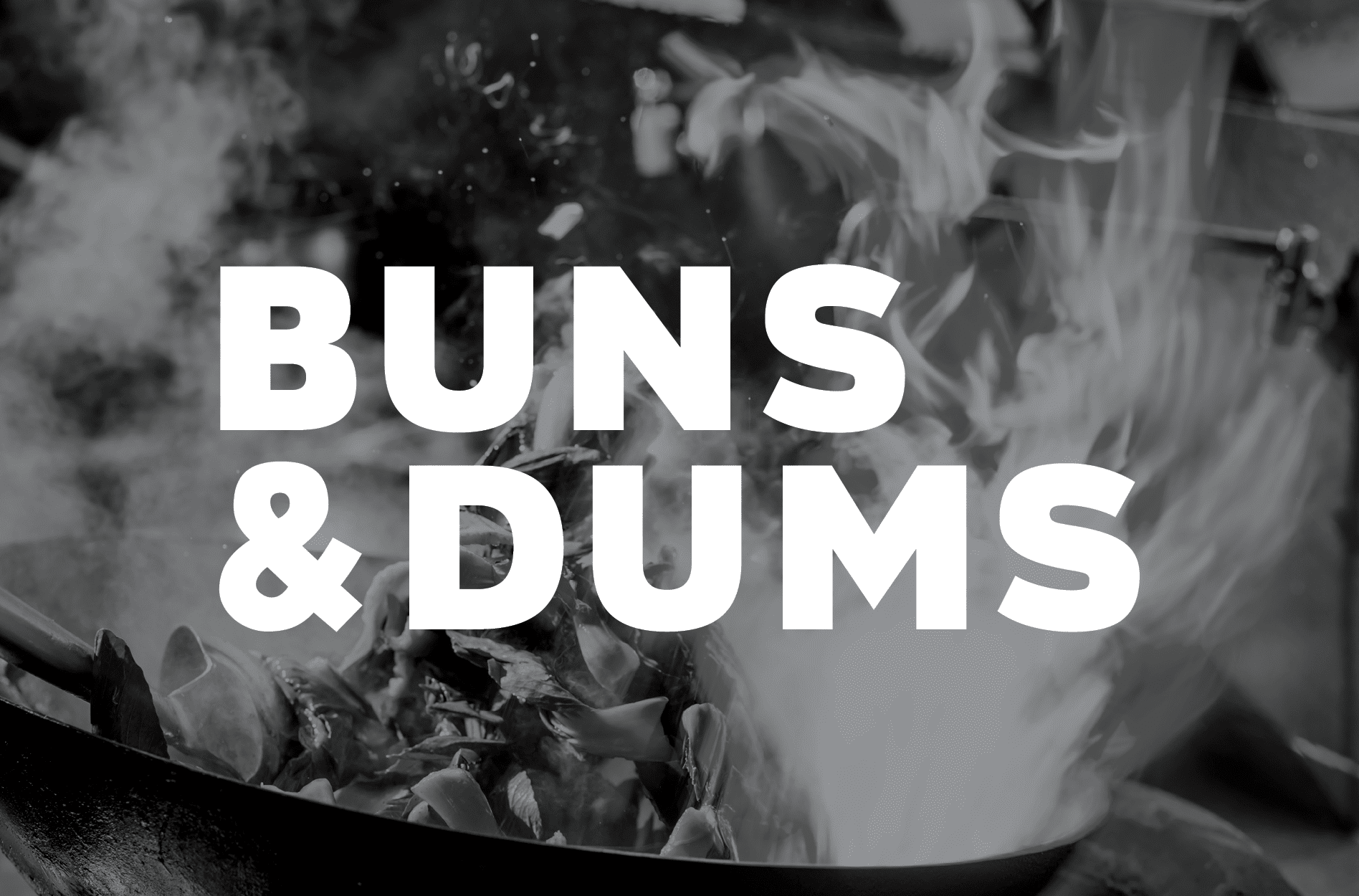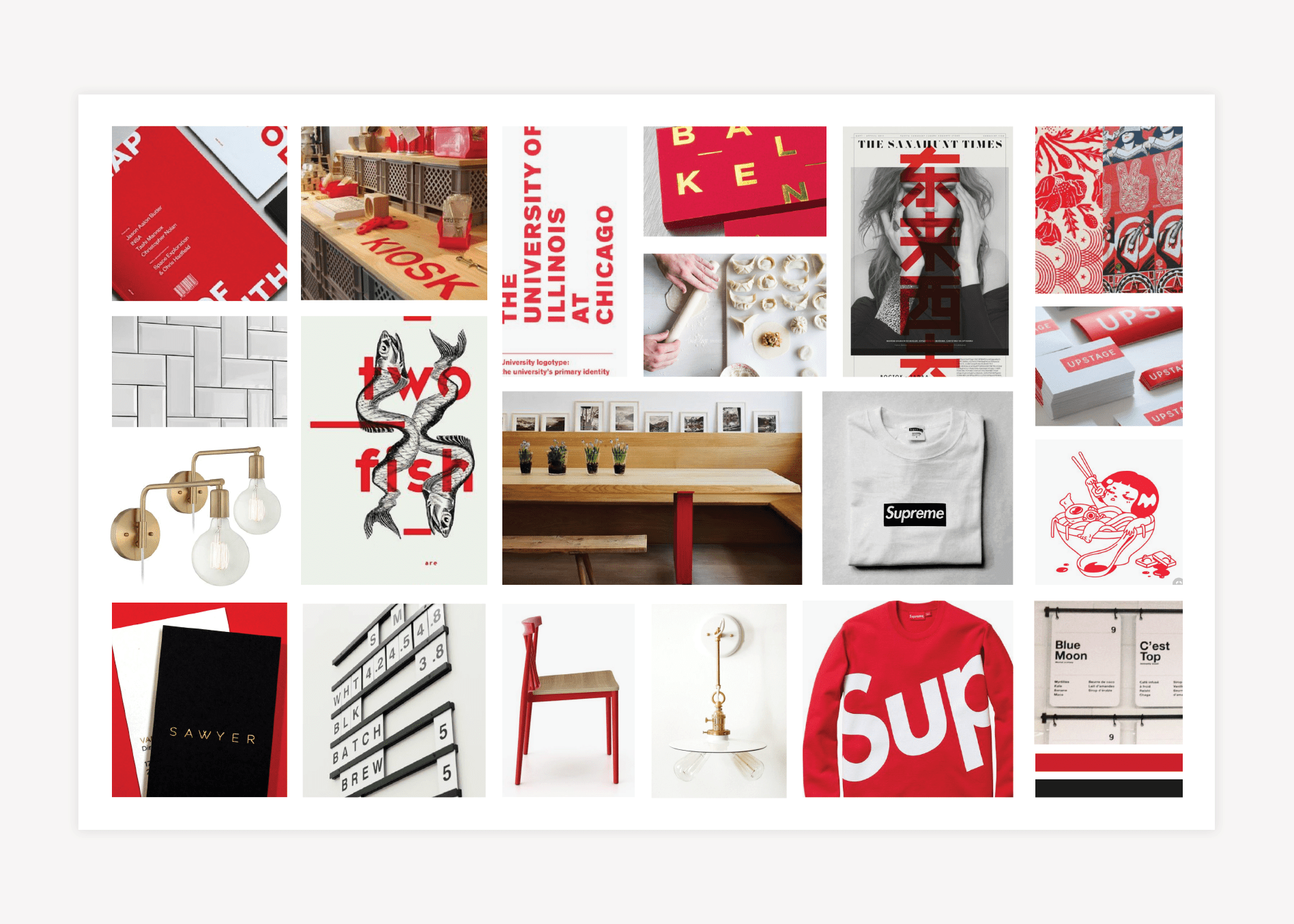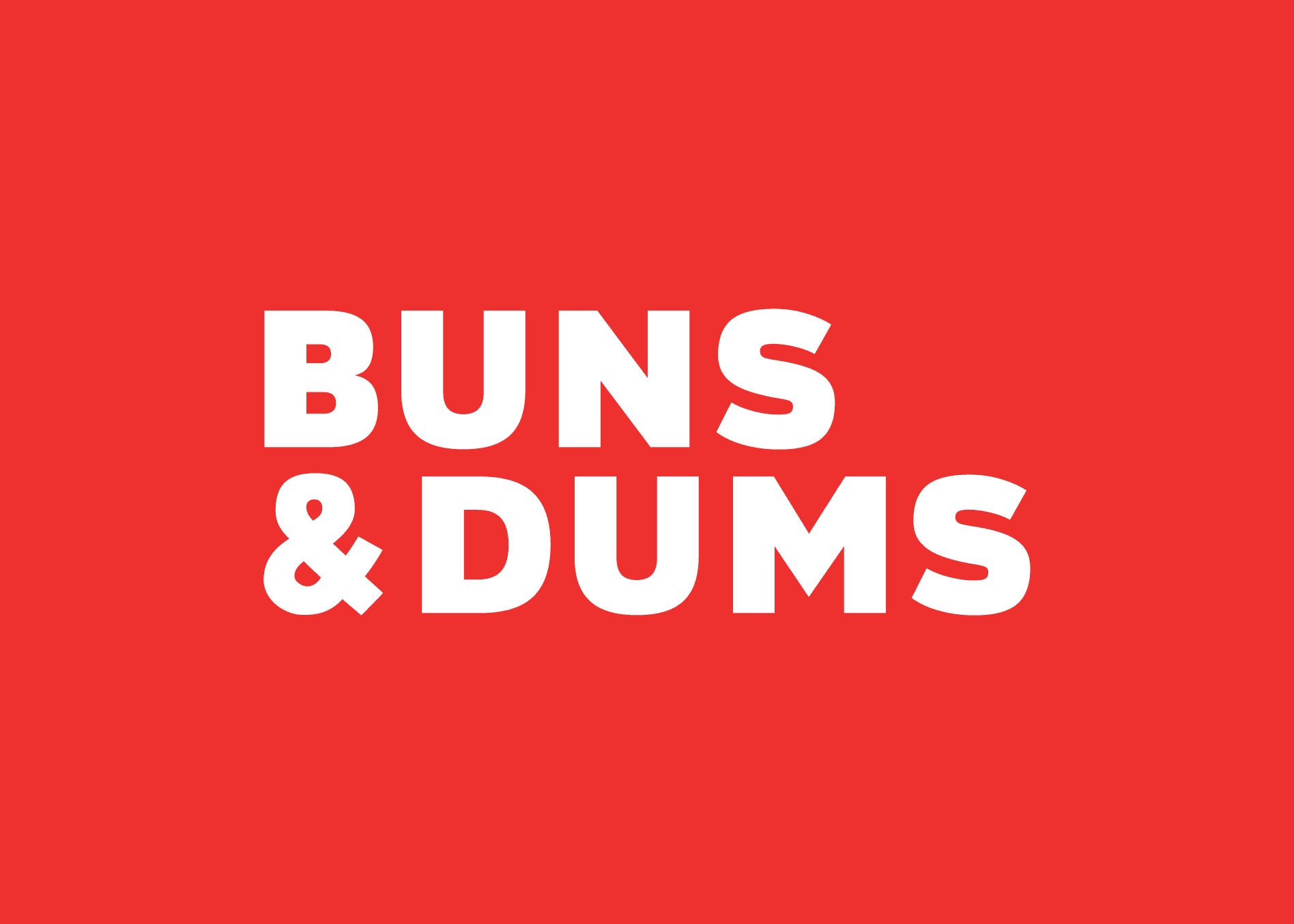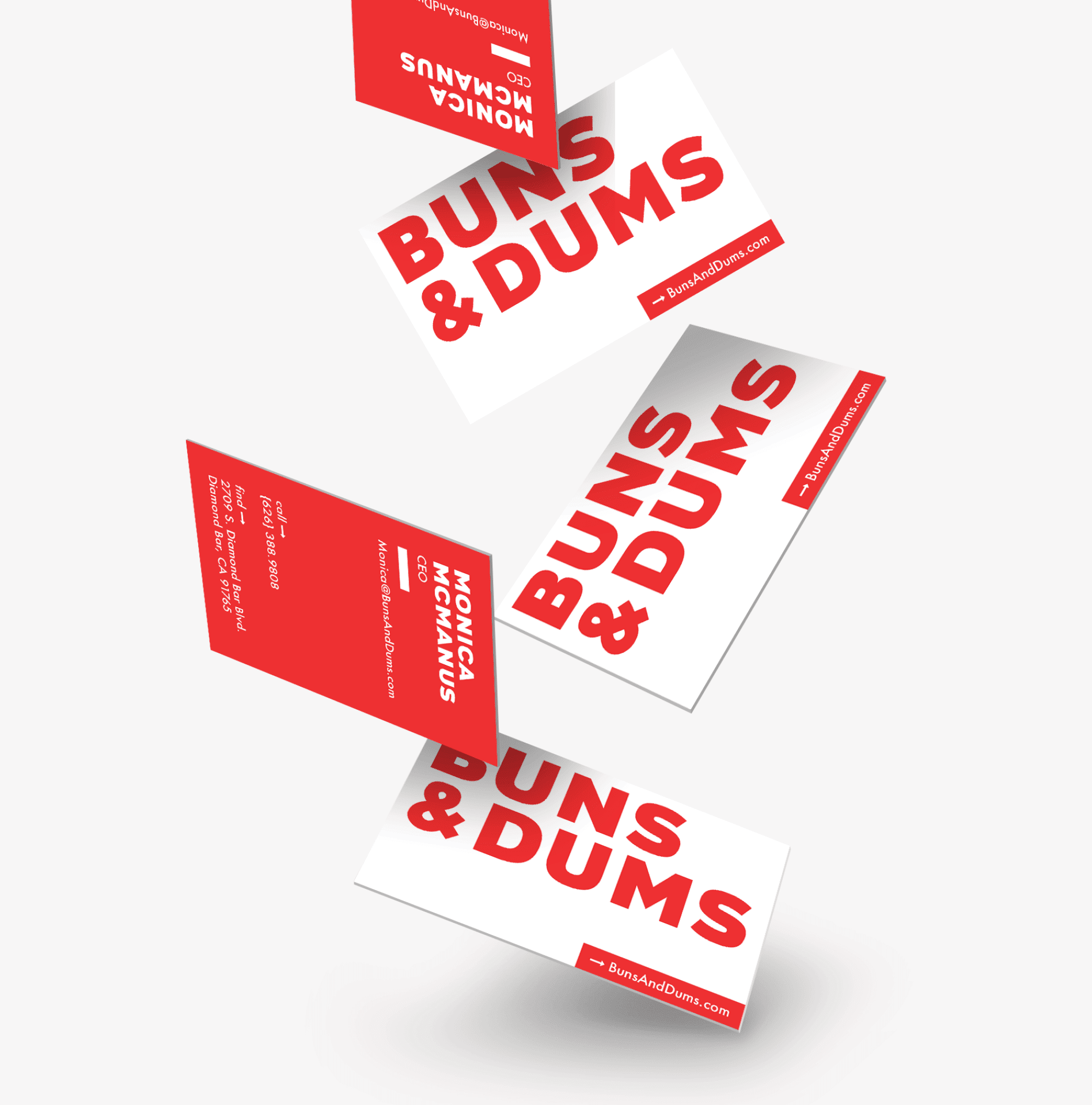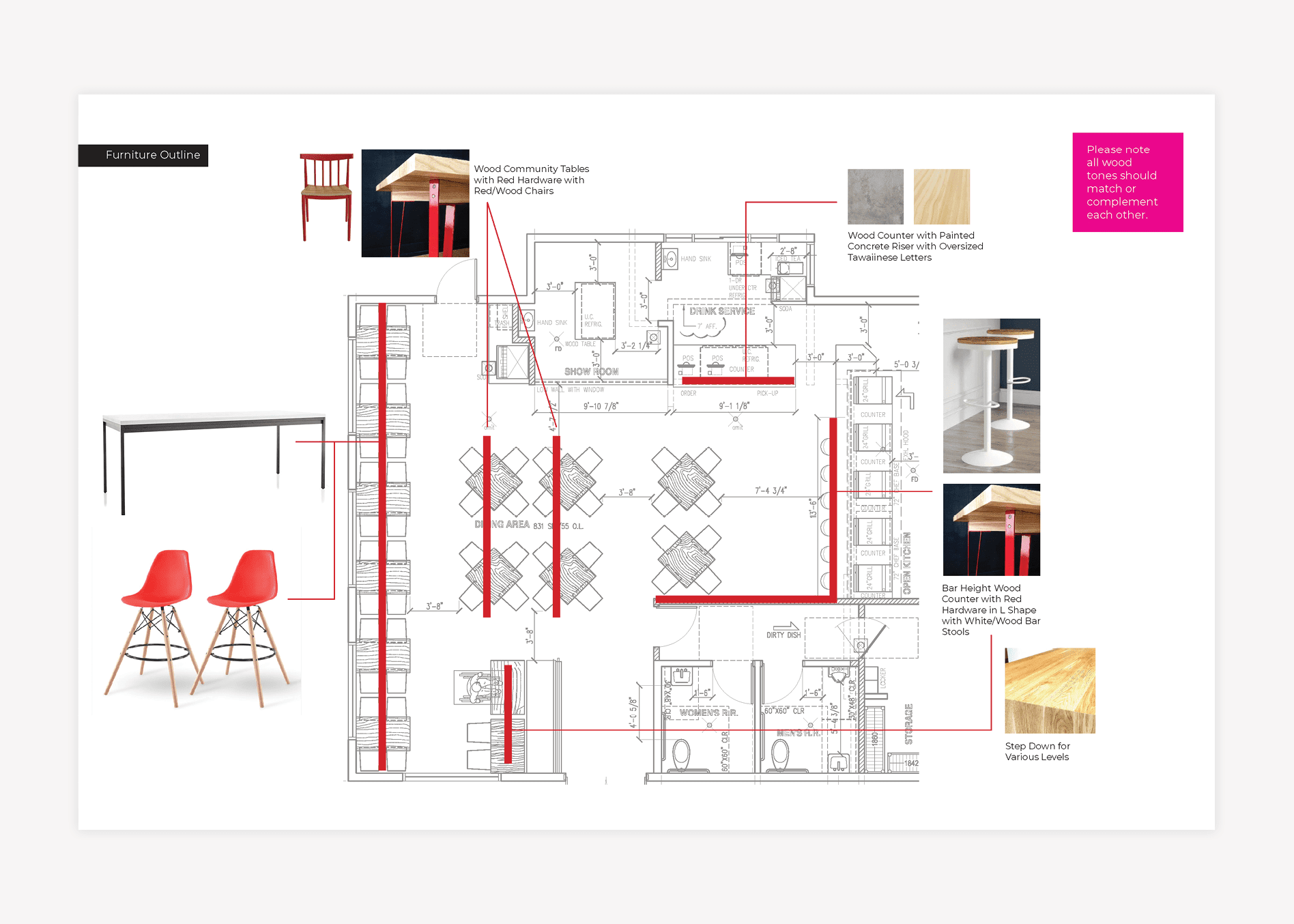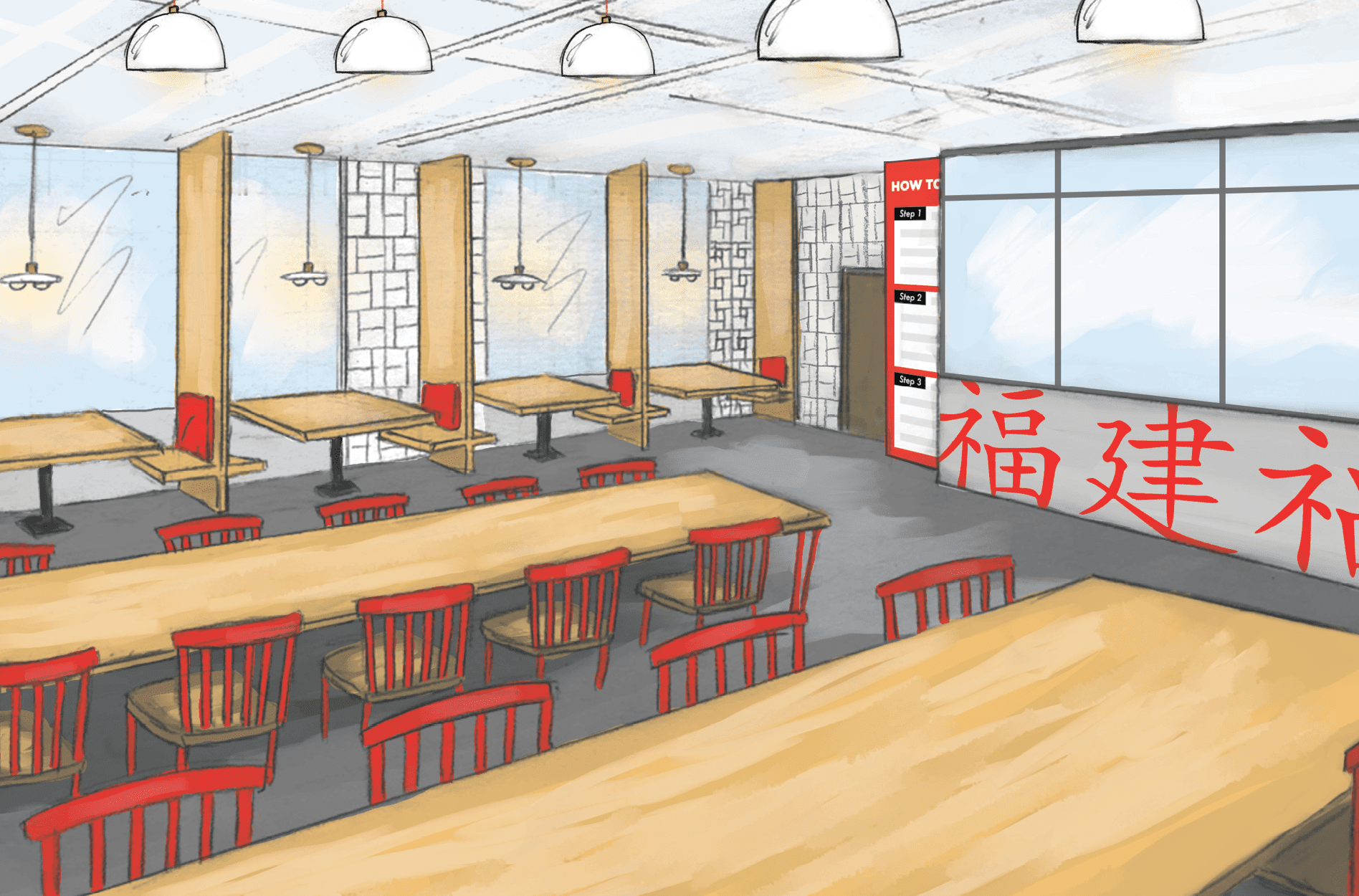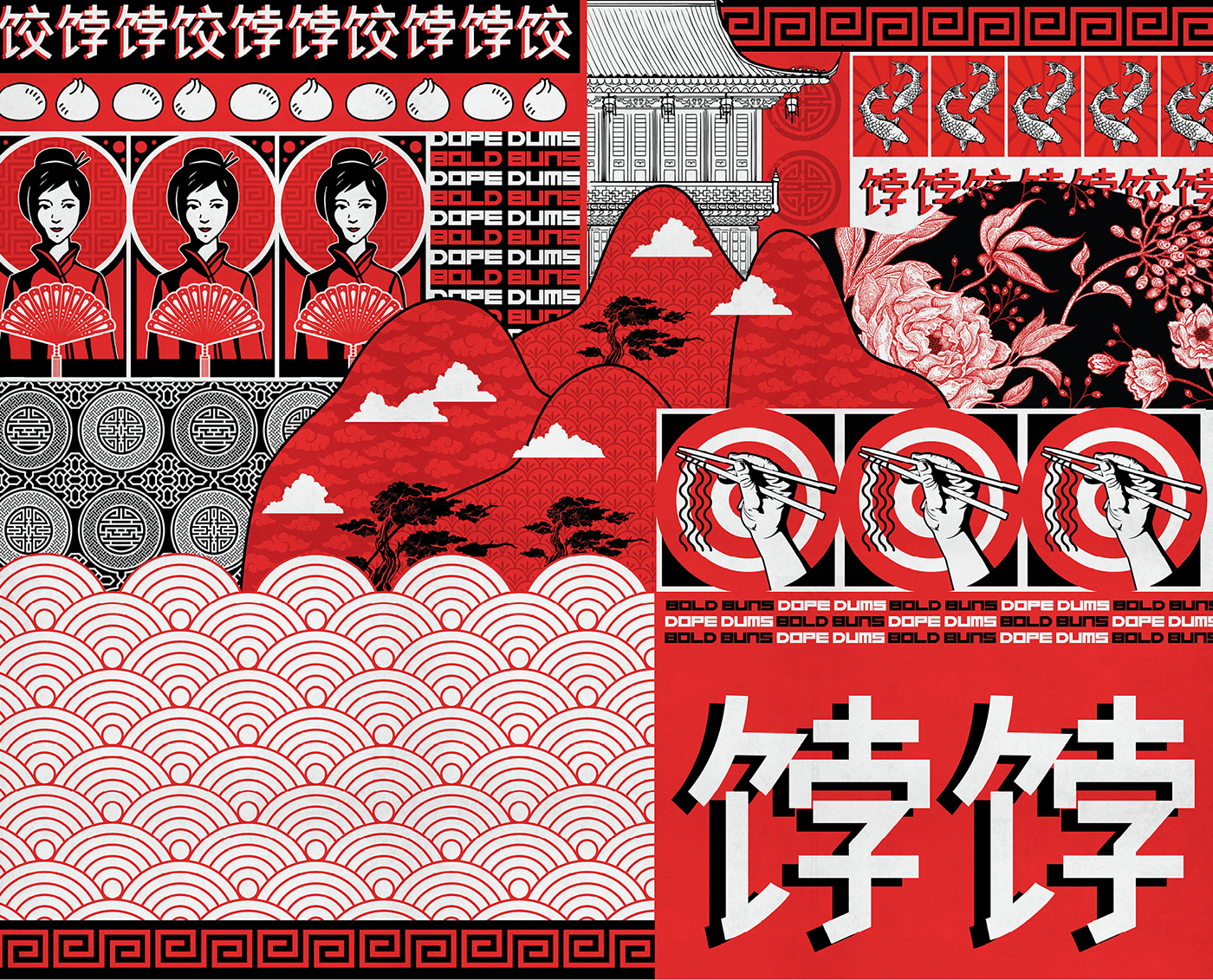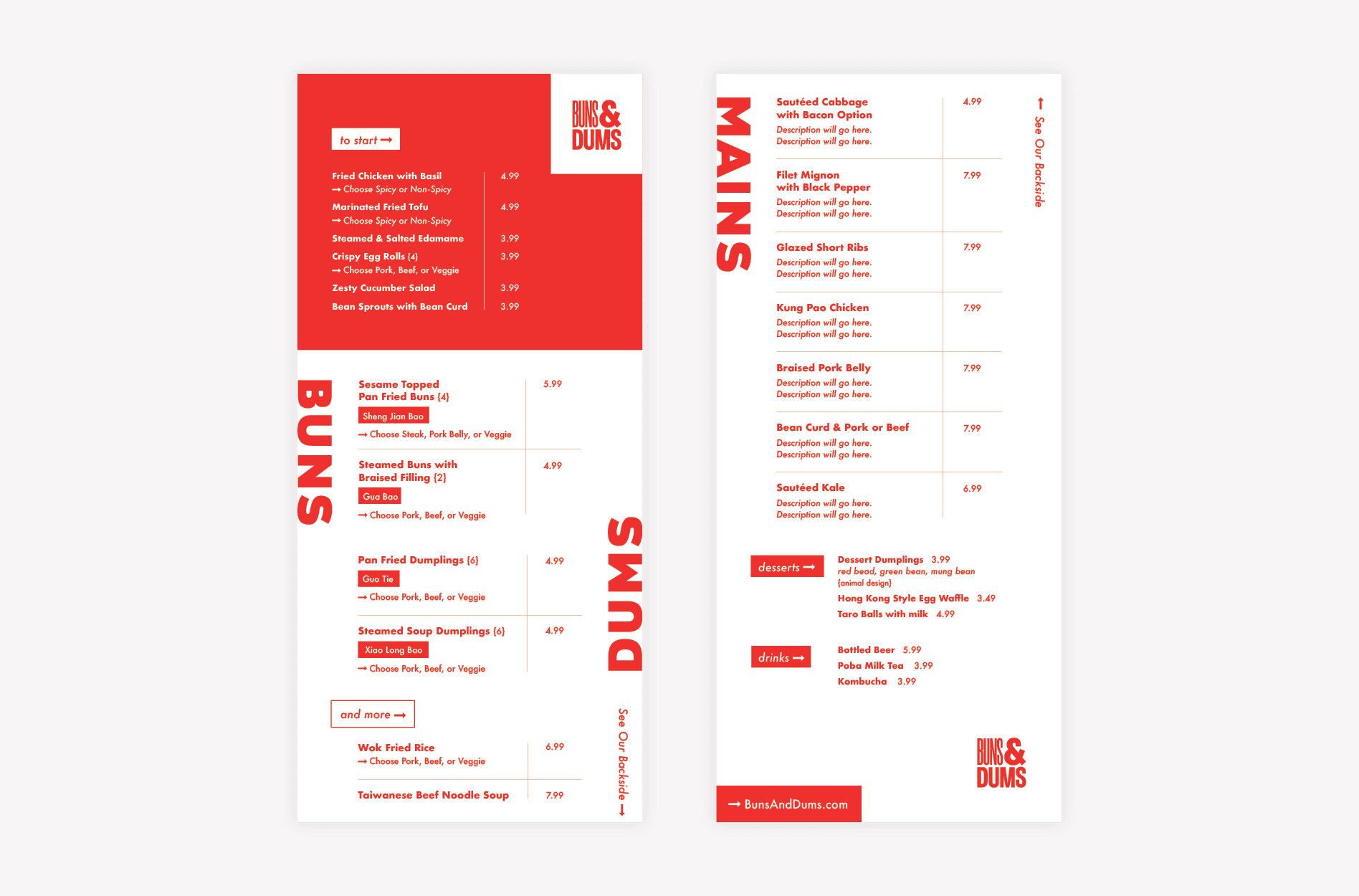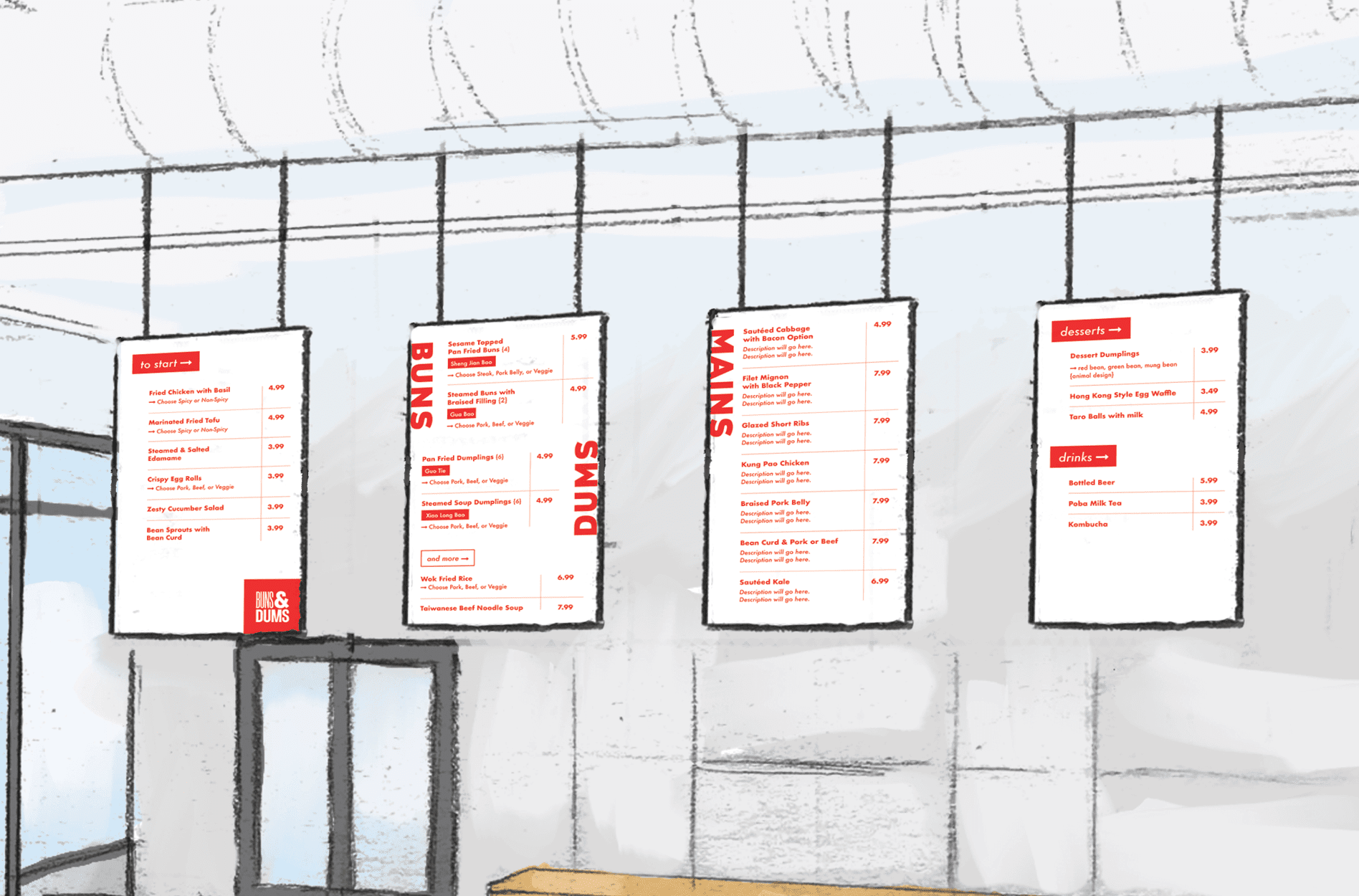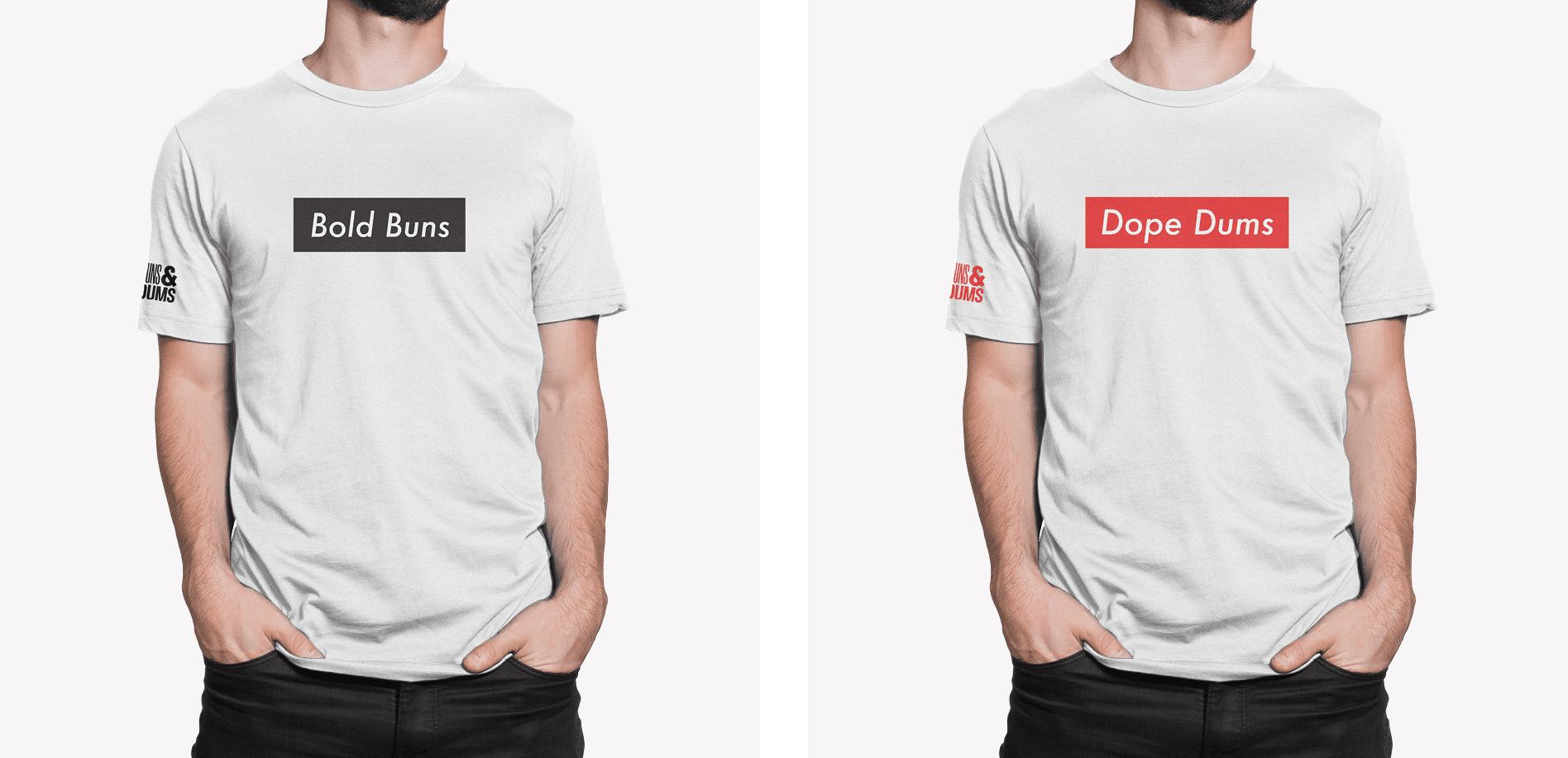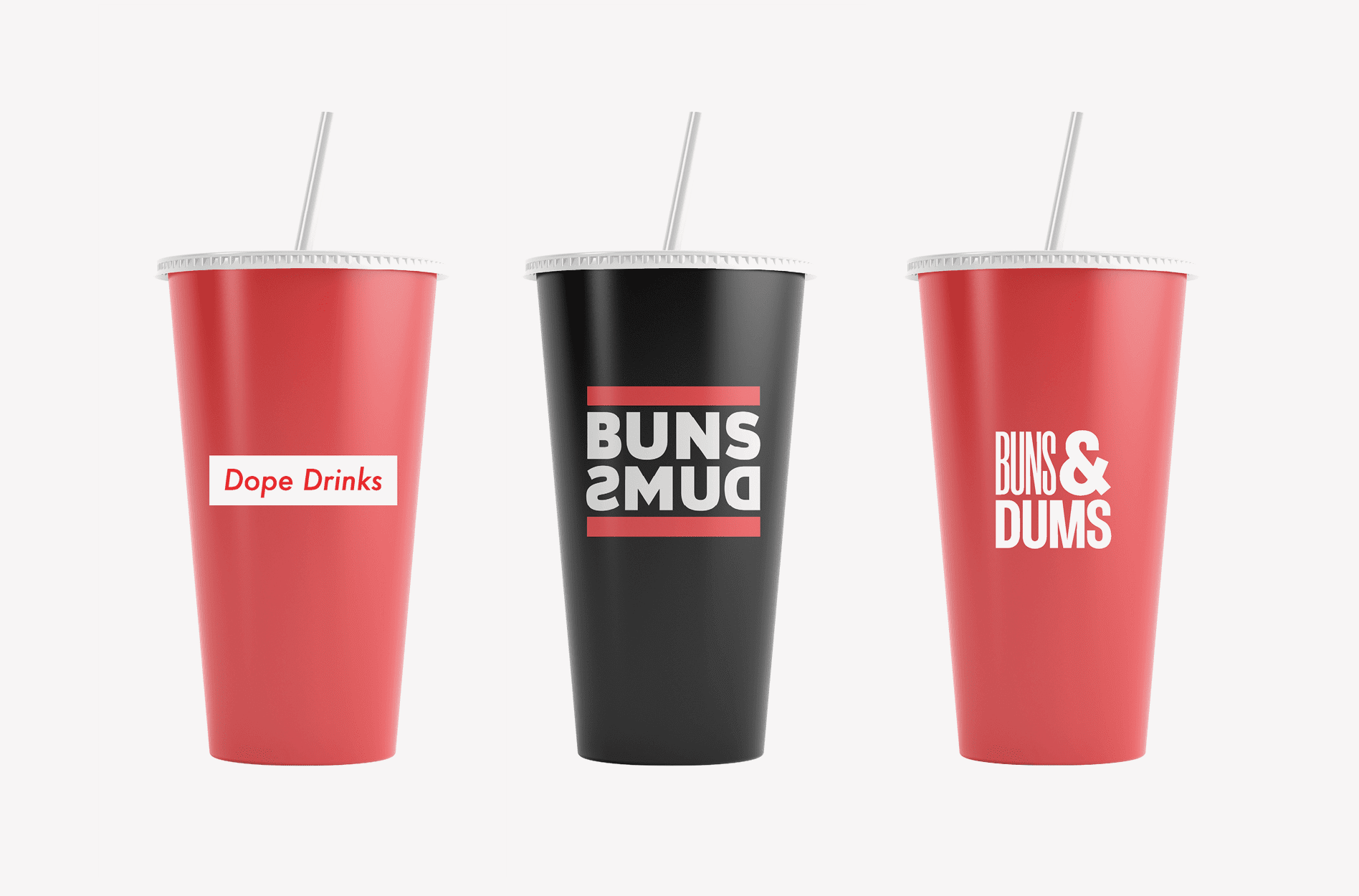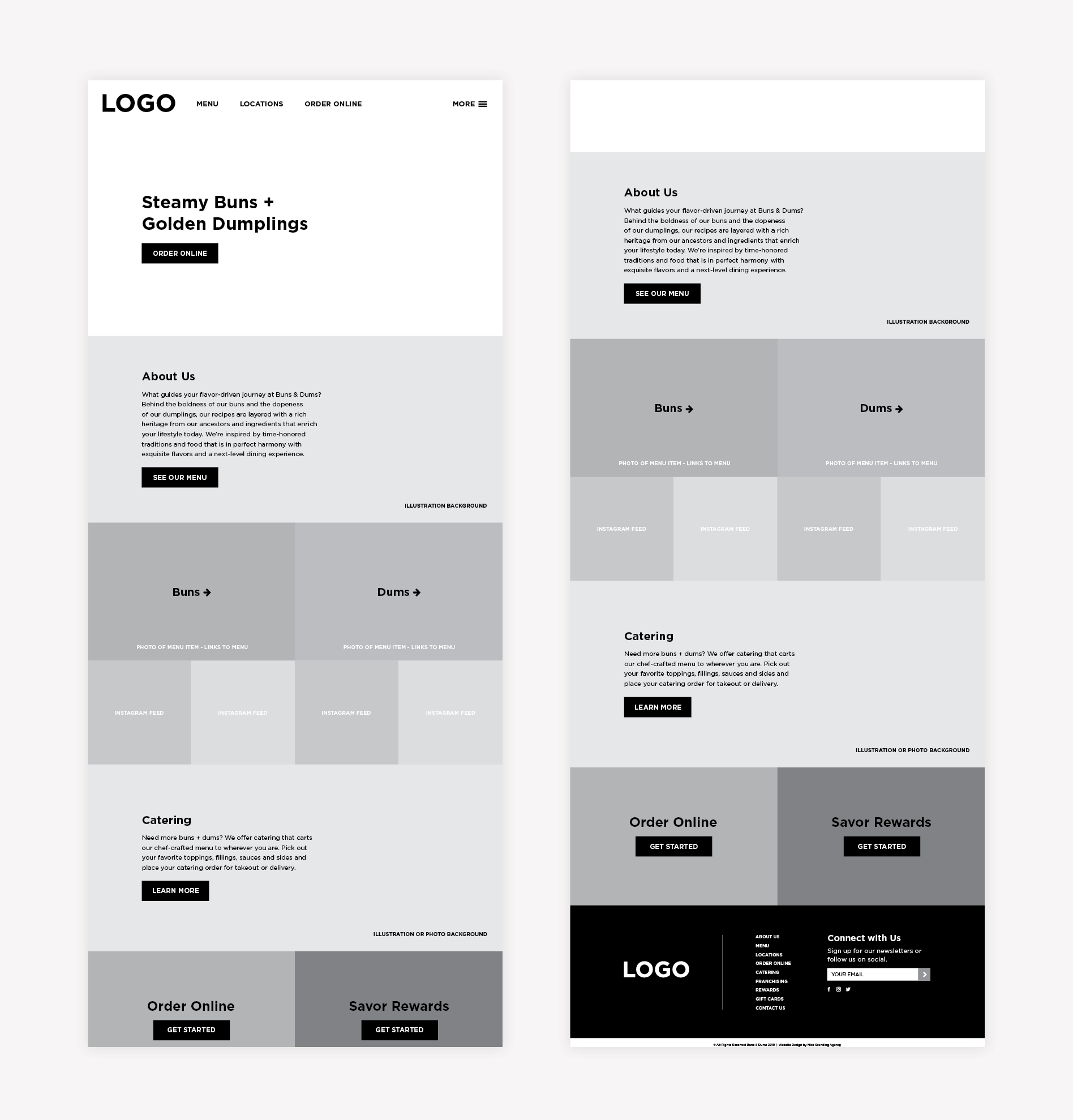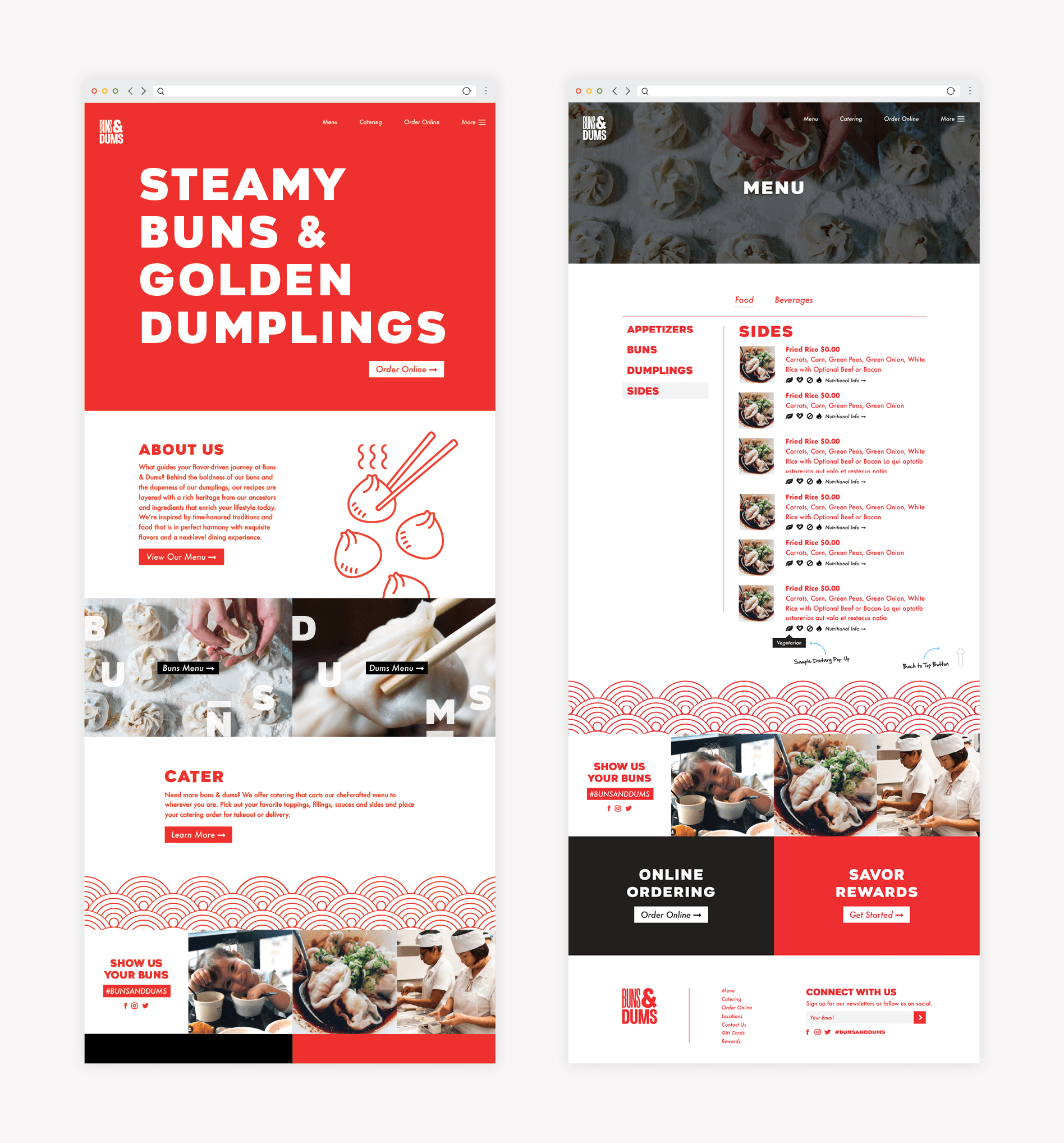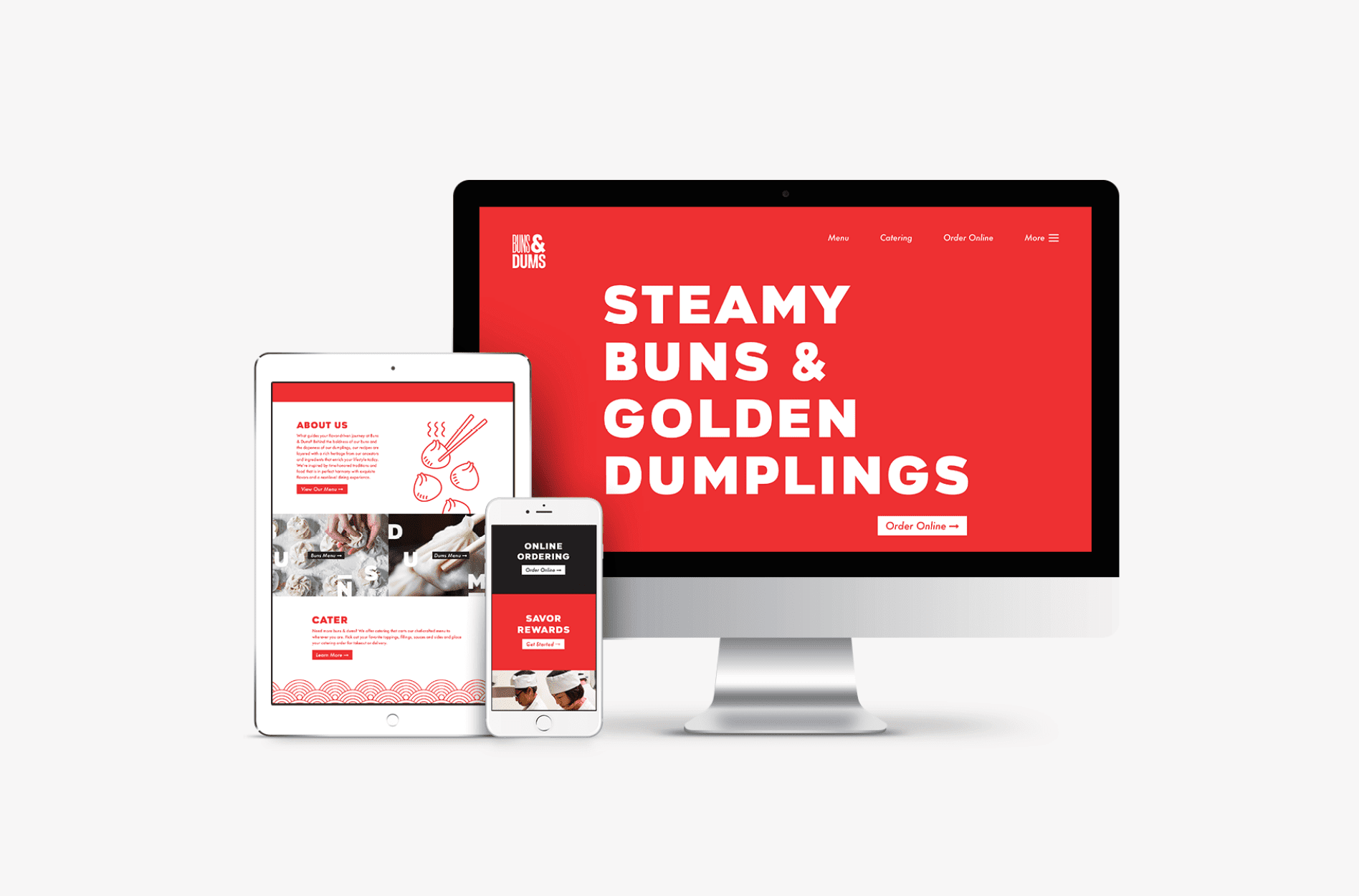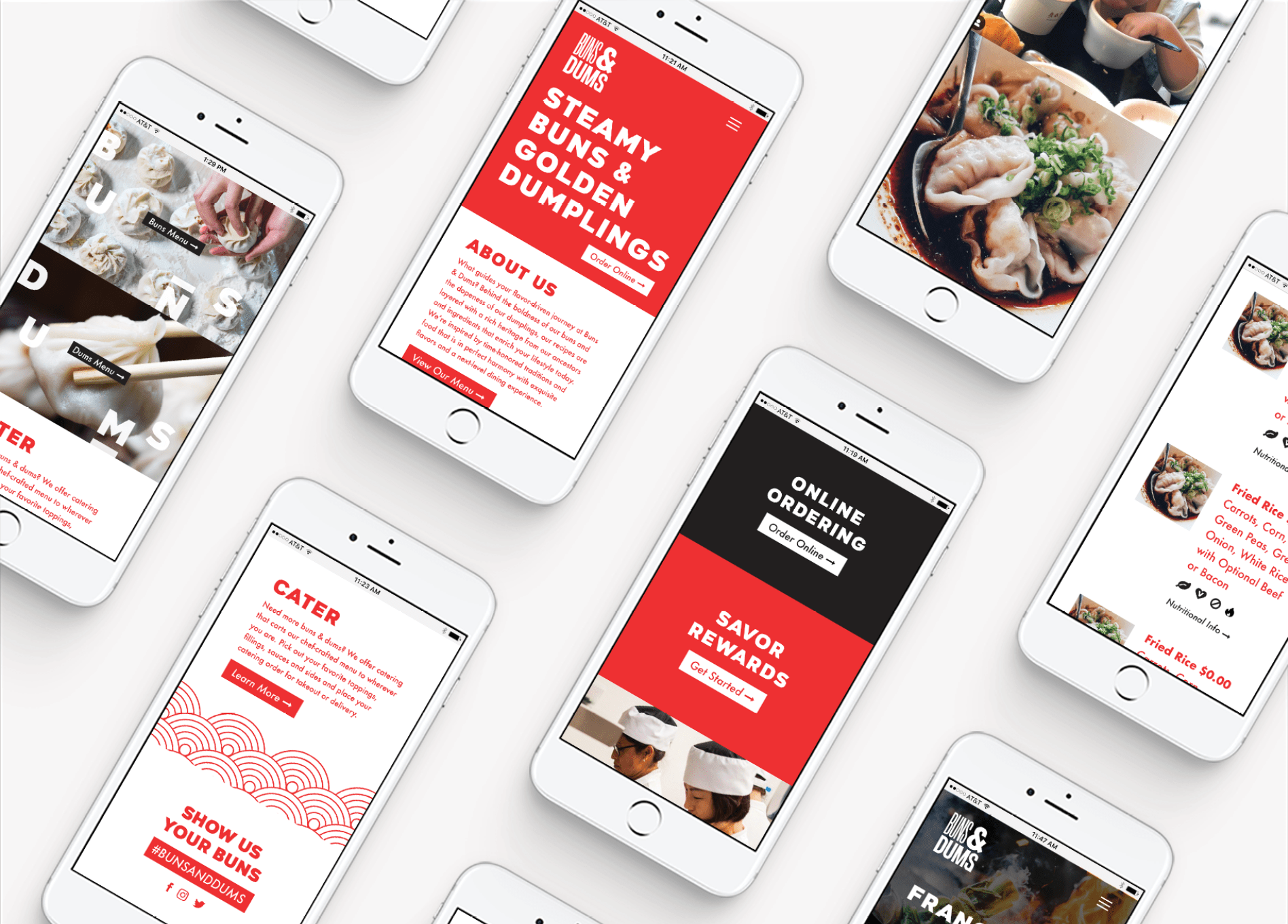Discovery
We started this fast-casual restaurant branding project with a discovery session. The session was a two-day, multi-city meeting that took our team members to San Francisco and Los Angeles. Not only did we meet with our clients to get an understanding of their desires for the brand, we also visited every dumpling house between SF and LA, tasting buns and dumplings, and gathering inspiration for the project.
During the discovery session, we learned that there is a disparity in the market for dumpling houses. There are some really old, been-there-forever, spots that have ah-mazing food and so, so environments. And then there are some super-slick spots with so, so food and up-to-date interiors.
There were also a couple of dine-in restaurants that were doing it all right, but were much larger in scale and sophisticated than what we were looking to create for our client.
Our findings from the cross-country trip were brought back to our team of branding experts, and we got to work on the fast-casual restaurant branding project.
Brand Direction + Story
Our process for fast-casual restaurant branding starts with creating a visual brand direction and an accompanying brand narrative. When finalized, this brand direction becomes the basis for the fast-casual restaurant brand, and everything we create is held up to the brand direction to ensure consistency and cohesion.
For Buns & Dums, we started by creating three distinct options for brand direction.
The first option was inspired by the streets of Chinatown and took on a bold, eclectic approach. Imagery indicative of street art was ever-present throughout the restaurant brand, and both furnishings and fonts took on a colorful, mismatched vibe.
For a second option, we created a zen, natural visual direction. This was comprised of light wood tones that took on the hue and texture of a bamboo bun basket. The light wood was complemented with natural orange and green shades. Black and white imagery was incorporated to showcase the beginnings of bun shops in urban environments, and large Chinese characters were interspersed with brush-stroke-style fonts and cleaner sans serifs.
The third option, and the one selected by the client, incorporated the best elements of both of the other boards. The approach was bold, like the first option. However, it was also clean and modern with a natural element, like the second.
The chosen brand board for the based the visuals on a palette of vibrant red, natural wood, and clean white. The imagery included a juxtaposition of industrial, powder-coated piping against clean concrete flooring, and subway tile. However, an unexpected element was introduced through custom wall murals modeled after San Francisco Chinatown street art.
